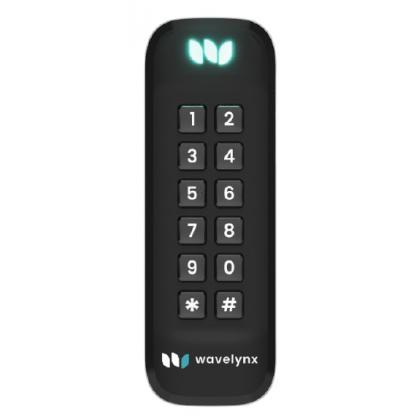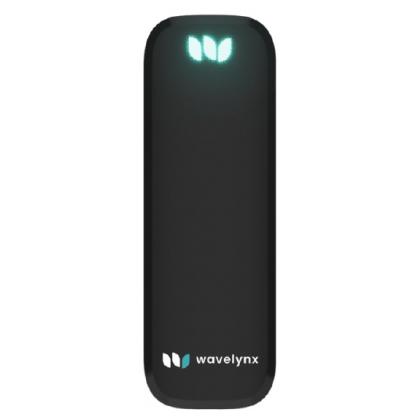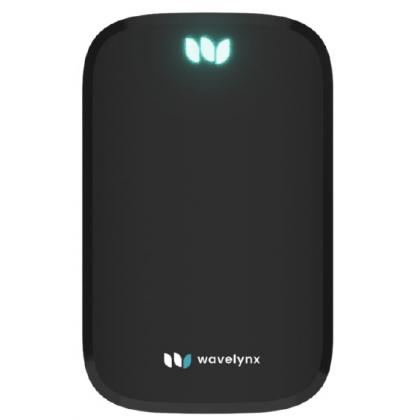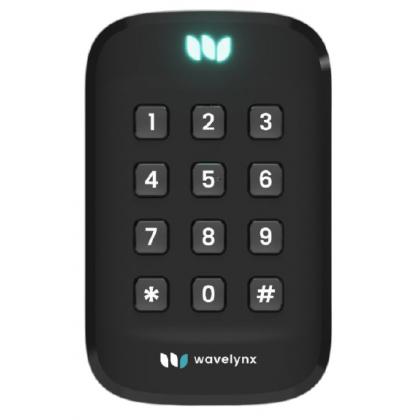The Ultimate Guide to Using Apple Wallet for Access Control
Apple Wallet access control offers secure, seamless, and sustainable entry using iPhones and Apple Watches transforming how organisations manage credentials across offices, campuses, hospitality, and residential spaces.
In today’s fast-evolving access control landscape, forward-thinking organisations are embracing mobile credentials to improve security and user convenience. At the heart of this shift sits Apple Wallet, now redefining how people access buildings, from corporate HQs to university dorms and smart hotels.
At the 2025 Security Event, CIE caught up with Joe Page of Wavelynx, a recognised expert in digital credentialing and access via Apple Wallet, to discuss the growing adoption of wallet-based access and why businesses are increasingly moving away from physical cards. Joe has been instrumental in driving mobile-first access solutions across multiple sectors, including education, commercial real estate, and residential developments.

As Joe explains:
“The user case is just so much better… it’s such a simpler way of issuing the credential and a way simpler way of actually using the transaction.”
In this feature, we’ll explore how Apple Wallet works for access control, why it offers a superior experience to traditional methods, and how to implement it securely within your organisation.
What is Apple Wallet?
.png)
Apple Wallet is a built-in iOS app designed to store digital versions of everyday digital identities like credit cards, transport passes, and tickets. But in 2025, it’s also your key to the front door thanks to NFC-based access credentials.
How Access Control Works with Apple Wallet
Key highlights:
- Credentials are stored securely on the device and can be used without waking or unlocking the phone (on supported readers).
- Devices can support multiple access credentials for different locations.
- Integration with leading platforms (e.g., SALTO, Gallagher, Wavelynx) makes deployment scalable.
“Wallet is a big part of what we do… and it’s going to start taking a real big market share.”
Benefits Over Traditional Access Cards
Replacing traditional RFID or magstripe cards with Apple Wallet access badges brings huge benefits:
- Enhanced Security
Traditional RFID cards are vulnerable to cloning and misuse. Apple Wallet credentials are encrypted, stored in the Secure Element and cannot be duplicated. Lost a phone? Credentials can be revoked instantly.
- Frictionless User Experience
No more forgotten cards. With Express Mode enabled, users can unlock doors just by holding their device near a reader, no Face ID, Touch ID, or unlocking required.
- Remote Issuance & Management
Admins can issue or revoke credentials remotely ideal for new hires, lost devices, or offboarding staff. Credentials appear in the Apple Wallet and can even be shared via Apple’s Share Sheet functionality.
- Sustainability & Cost Efficiency
Reduce plastic waste and the ongoing cost of printing, replacing, and managing physical cards.
Industry Use Cases
Corporate Offices
Streamline onboarding and eliminate badge re-issuance. Apple Wallet badges integrate seamlessly with platforms like Gallagher and Wavelynx, enabling enterprises to future-proof their infrastructure.
Universities & Student Housing
Students can access dorms, classrooms, libraries and even vending machines using a single mobile credential.
Hotels are using digital wallet room keys to improve guest experience, enabling direct-to-room check-in without visiting the front desk.
Multi-Dwelling Units (MDUs)
In residential spaces, residents can use Apple Wallet for front door access, shared facilities, and secure deliveries.
Joe Page notes,
“It opens the whole wallet on the physical credential space... and the application is huge from lockers to vending.”
How to Implement Apple Wallet Access
1. Choose a Compatible Platform
Select an access control system that supports Apple Wallet credentials (e.g., SALTO, Gallagher, Wavelynx).
Readers must support NFC and Express Mode functionality. Wavelynx’s ethos readers, for instance, support Apple Wallet, BLE, and NFC for broad compatibility.
3. Configure Credential Issuance
Admin teams can issue credentials remotely via integration with platforms like SALTO’s Nebula or Gallagher Command Centre.
Provide training or onboarding documentation so users know how to use and manage credentials in Apple Wallet.
5. Enable Wallet Features
Enable Express Mode for seamless tap-to-enter functionality and allow users to add their badge directly from emails, links, or QR codes.
Final Thoughts
Apple Wallet is more than a modern convenience, it’s the future of access control. With greater security, lower admin costs, and a vastly improved user experience, organisations are increasingly turning to mobile-first solutions.
Whether you're managing an office, a university, or a residential development, the transition to digital credentials isn’t just an upgrade - it’s a transformation. As Joe Page from Wavelynx puts it,
“It’s a simpler way of issuing, a simpler way of using, and that’s what people want.”
For businesses ready to modernise, Apple Wallet access offers a future-proof path toward smarter, safer entry systems.
Find out more about keyless accress credentials:
- What is Contactless Access Control?
- Access Control Contactless Authentication Methods
- What is Bluetooth BLE Access Control?
- NFC Keyless Entry for Access Control and Door Intercoms
- QR Code technology in Access Control & Door Intercoms
Featured Products

.png)










